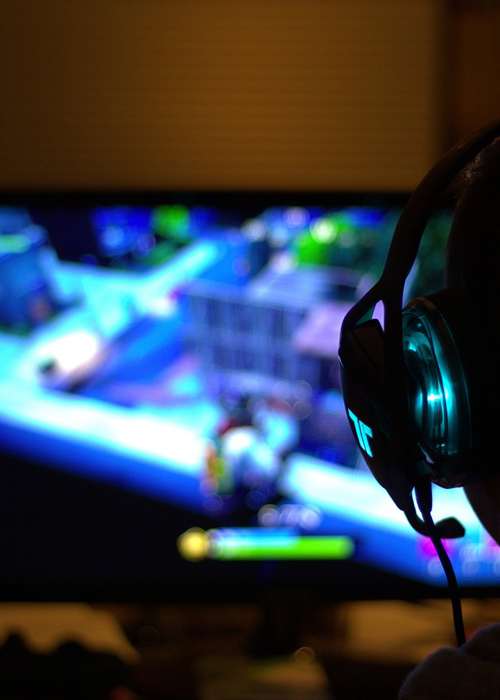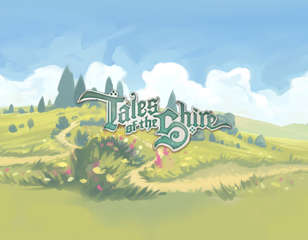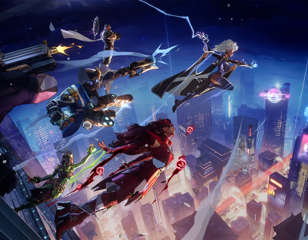
How Online Multiplayer Games Became so Famous
Insight into the history and evolution of gaming and how this correlates with the wider gaming industry
The current 249 million monthly users of Fortnite illustrate that multiplayer gaming continues to dominate the gaming industry. What was once a solitary activity has evolved into a global phenomenon, enabling millions of players to complete missions together in real time.
Split-screen gameplay and LAN parties have largely become obsolete, replaced by online lobbies and cross-platform play. But how did we get here? How did online multiplayer games rise to become the leading form of gaming today? Let’s take a look.
The Evolution of Multiplayer Gaming
Multiplayer gaming began with LAN parties, split-screen consoles, and early PC systems. Many gamers remember iconic titles like Quake and Counter-Strike, which debuted in the late 1990s and ushered in real-time competitive online play.
At the same time, internet pokies (online versions of slot machines) gained popularity, bringing the thrill of casino gambling to home computers. Online poker also evolved, offering multiplayer experiences where players could compete against others worldwide, closely mimicking the social dynamics of real-life games.
As technology progressed, so did the gaming landscape. Online poker rooms and online pokies platforms embraced multiplayer features, mirroring the real-time, competitive, and social elements of mainstream multiplayer video games. The rollout of broadband internet marked a turning point, transforming digital communication and entertainment.
Platforms like Steam and Xbox Live made it easy for people across the globe to instantly access games and connect with others. These advancements didn’t just revolutionise video gaming - they brought poker tables, slots, and other traditionally solo experiences into the multiplayer space.
A New Era of Online Gaming
Today’s leading games are designed around multiplayer features. Game developers now focus on building large player communities and integrating social media functionality. Two major developments propelled the rise of online multiplayer:
- The Battle Royale Boom - Fortnite popularised the battle royale format and became a global sensation. The game now has over 400 million registered players. Its creators continue to prioritise multiplayer features, most recently introducing split-screen functionality on PS5 and Xbox through LEGO Fortnite, bringing couch co-op back with a fresh twist.
- Cross-Platform Play - Games like Minecraft and Rocket League broke down the barriers between PC and console players. With unified servers, users from any device can now play together seamlessly, creating a more connected and inclusive gaming experience.
The Technology Behind the Trend
Multiplayer games flourished thanks to major technological advancements that modernised the entire industry:
Broadband & Mobile Internet - Faster internet connections reduced lag and eliminated interruptions, making online gameplay smoother and more accessible. Players can now connect from virtually anywhere with minimal disruption.
- Cloud Gaming - Platforms like Google Stadia allow gamers to play high-end titles without needing expensive hardware. Cloud servers host the games, enabling users to stream premium-quality content on a wide range of devices.
- Live Service Models - Modern games evolve continuously rather than ending after release. Titles like Apex Legends thrive on seasonal updates, microtransactions, and new features. This "live" model creates long-term engagement far beyond the initial launch.
- VR/AR Integration - Virtual and augmented reality are reshaping multiplayer interaction. Platforms such as VRChat offer immersive 3D social spaces, with the VR/AR gaming market projected to reach £73 billion by 2027.
The Social and Cultural Impact
Multiplayer games don’t just entertain, they connect people. Online communities turn individual gameplay into collective experiences. Platforms like Discord allow players to strategise, communicate, and build lasting friendships during and after gameplay.
Esports has also transformed multiplayer gaming into a professional space. Tournaments like the League of Legends World Championship attract millions of viewers and offer multi-million-pound prize pools. What started as casual fun has grown into a global industry
A study by Newzoo found that social interaction is important to 50% of gamers. Multiplayer environments help players stay connected and share experiences in real-time. Key social and cultural benefits include:
- Building friendships and teamwork skills
- Creating career opportunities in esports
- Fostering cross-cultural communication
- Offering safe and inclusive social spaces
- Enabling collaborative content creation
Conclusion
The rise of online multiplayer games has been driven by both technological innovation and increasing public demand for shared digital experiences. The shift was fuelled by fast internet access, cloud gaming, and the popularity of esports.
Projections suggest the online gaming market will reach £27 billion by 2026. As multiplayer games continue to evolve, they’re not just shaping the future of entertainment, they’re helping to build a truly global community of gamers.

About The Author
Jake Bannister
Jake is GGRecon's Co-Founder and Operations Director. You'll find him covering our word game brain teasers, as well as sports games such as Football Manager and EA FC. He's also that teammate on your Rocket League team spamming "Wow!".































